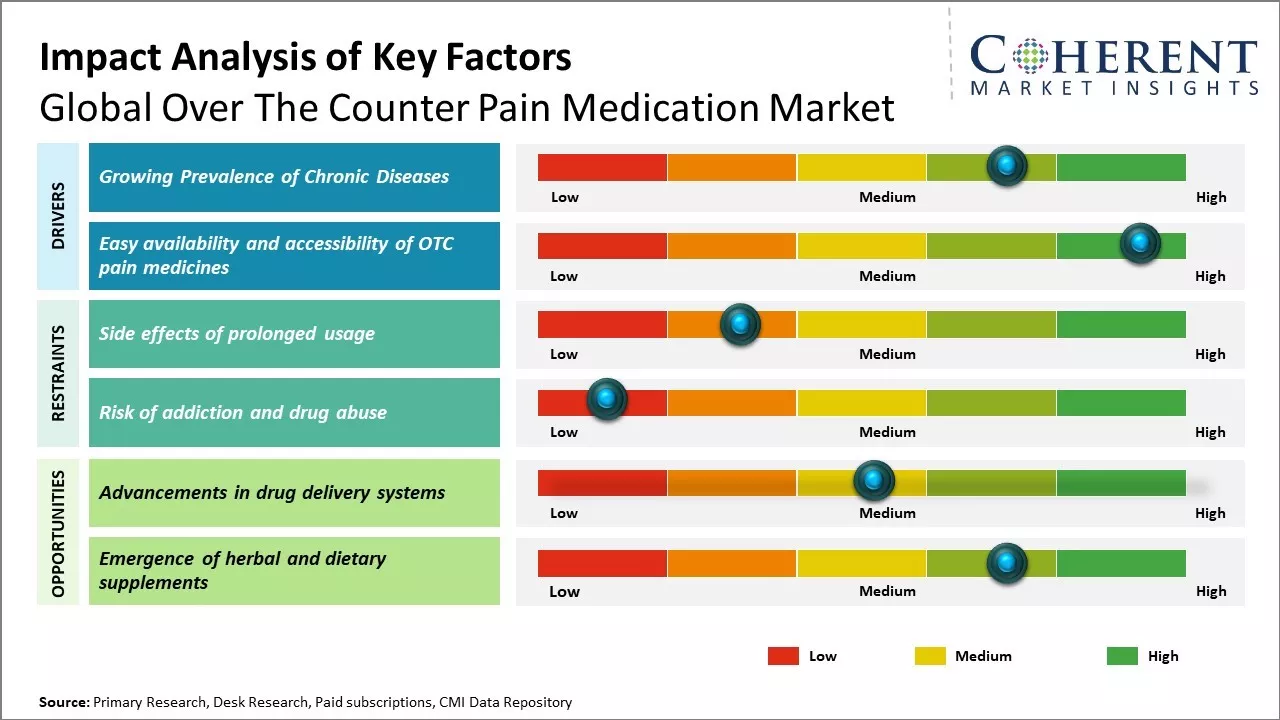The global over the counter pain medication market is estimated to be valued at USD 28.23 Bn in 2025 and is expected to reach USD 37.43 Bn by 2032, exhibiting a compound annual growth rate (CAGR) of 4.1% from 2025 to 2032.

To learn more about this report, Request sample copy
The over the-counter pain medication market has been witnessing positive trends over the past few years. The increasing population across the globe along with the rising geriatric population vulnerable to joint pain and arthritis has been a major factor driving the demand for OTC pain medication. In addition, the changing lifestyles and hectic schedules have led to higher stress levels resulting in more back pain, muscle ache, and headaches among people. This has increased the self-medication trend without prescription drugs. Further, advancements in formulations to reduce dosage frequency and increase effectiveness of products have boosted consumer confidence in OTC painkillers. However, the availability of alternative treatment options and growing awareness about side-effects of pain relievers may limit the market growth in the coming years.
Market Driver: Growing Prevalence of Chronic Diseases
The rising prevalence of chronic conditions globally has significantly contributed to the growth of the over-the-counter pain medication market. Chronic diseases requiring long term pain management such as arthritis, back pain, migraines, and headaches have been on a steady rise. It is estimated that nearly 60% of the global population suffer from chronic pain conditions. As people are living longer lives, age-related physical impairments are more commonplace further exacerbating the risks of chronic pain. Busy lifestyles, excessive workload, lack of physical activity, and an aging workforce are also factors fueling the problem. Sufferers of chronic pain often resort to OTC medications for long-term or episodic relief as they are easily available, affordable, and do not require a medical prescription. Pharmacies have witnessed growing demand for popular products containing ibuprofen, acetaminophen, and topical gels/creams. While prescription strength painkillers are also widely used, concerns revolving around addiction, tolerance, and side effects have made OTC drugs an attractive alternative. Physicians too recommend OTC medications as the first line of treatment for mild to moderate pain cases in order to avoid overprescription of opioids or other controlled substances. As chronic conditions become more common worldwide, the use of OTC medications for pain management is likely to increase as well.
Joining thousands of companies around the world committed to making the Excellent Business Solutions.
View All Our Clients